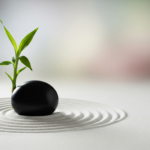The most powerful lesson I am learning in medicine whispers against the roar of constant intervention. It is the art of “”unmedicine”: the wisdom that the best care can often mean doing less. I entered medical school envisioning a future of decisive action. Yet, my clinical experiences have painted a more complex picture. I’ve seen a physician spend a full consultation gently steering a patient away from an unnecessary MRI, their conversation a masterclass in building trust and managing fear. This wasn’t inaction; it was a different, more demanding kind of action.
This philosophy extends powerfully to de-prescribing. For our elderly patients, navigating a labyrinth of medications, stopping a pill can be a profound act of compassion. It is a conscious choice to lift the burden of side effects and complexity, to prioritize the quality of a life. This requires a deep partnership with the patient, a shared courage to choose a different path. However, this path is fraught with systemic obstacles. The fear of malpractice, the pressure of satisfaction metrics, and financial structures that incentivize volume all push towards more. Practicing unmedicine is to gently push back against this current, advocating for value and well-being over mere activity.
As a future physician, my education must encompass this balance. I strive to learn not only how to treat but also when not to treat, to cultivate the judgment for watchful waiting. The future of health care needs doctors who see that sometimes, our most valuable tool is a well-placed pause. The challenges are undeniable. How do we uphold evidence-based practice while honoring individual patient goals? These questions lie at the heart of our profession, demanding not technical fixes, but ethical clarity and human connection.
Our generation will step into a system grappling with the consequences of overcare. We must become stewards of sustainable practice, skilled in the dialogue that aligns clinical wisdom with patient values, finding the courage to choose restraint. In moments of uncertainty, the impulse to do is strong. But I am learning to see the quiet courage in a different choice. I aspire to be a doctor who understands that the height of clinical skill can be found not in adding another intervention, but in the confidence to subtract one.
The white coat symbolizes knowledge and action. I now believe it must also represent the discernment to know when action means stepping back. This is the delicate art of unmedicine, and it may be the highest form of care we can offer.
Kelly Dórea França is a medical student.




















![How should kratom be regulated? [PODCAST]](https://kevinmd.com/wp-content/uploads/Design-2-190x100.jpg)
